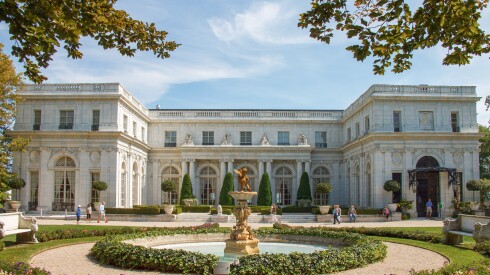The Must-See Sights on Germany’s Romantic Road
Germany’s Romantic Road runs for 220 miles from Würzburg to the Alps, stringing together several beautifully preserved medieval towns—Rothenburg ob der Tauber, Nördlingen, and Dinkelsbühl, to name just three—as well as impressive castles and soaring cathedrals. Along with dazzling architecture and fairy-tale scenery, visitors can expect endless cultural attractions, including the UNESCO-listed Würzburg Residence and Augsburg’s historic Fugger social housing complex.
Residenzplatz 2, 97070 Würzburg, Germany
The former residence of Würzburg’s prince-bishops, this UNESCO World Heritage site is one of the most important Baroque palaces in Europe. It was—remarkably, given its scale and level of detail both inside and out—built almost entirely within a single generation. Court architect Balthasar Neumann oversaw the construction, while leading architects from Germany and France created the fabulous ornamentation. Woodcarvers, sculptors, and artists from Italy—including Giovanni Battista Tiepolo, regarded as one of the greatest fresco painters of the 18th century—also contributed to the design.
Rebuilt after World War II, the palace now features a bevy of architectural styles, from German and Viennese Baroque to French château. Inside, the White, Imperial, and Garden halls are can’t-miss attractions, as are the grand staircase and ceiling fresco by Tiepolo and the Mirror Cabinet. Before leaving, be sure to take a walk in the court gardens, which feature fountains, charming yew trees, and a group of cherub statues by Johann Peter Wagner.
Rebuilt after World War II, the palace now features a bevy of architectural styles, from German and Viennese Baroque to French château. Inside, the White, Imperial, and Garden halls are can’t-miss attractions, as are the grand staircase and ceiling fresco by Tiepolo and the Mirror Cabinet. Before leaving, be sure to take a walk in the court gardens, which feature fountains, charming yew trees, and a group of cherub statues by Johann Peter Wagner.
Jakoberstraße 26, 86152 Augsburg, Germany
Set inside a walled enclave in the city of Augsburg, Fuggerei is the world’s oldest social housing complex still in use. Named for its founder, Jakob Fugger, it was set up in 1521 for the city’s poorer inhabitants, eventually growing to include 67 houses, 142 apartments, a church, and an administrative building. Today, it continues to house Augsburg’s lower-income residents, who pay an annual rent of just one Rhenish guilder (less than a euro). Each family gets their own apartment, which includes a kitchen, parlor, bedroom, and tiny spare room, plus modern conveniences like plumbing and televisions. Ground-floor units have small gardens and sheds, while upper-floor apartments have attics. In order to live here, however, one must be an Augsburg resident for a minimum of two years prior to application and prove they became indigent without any outstanding debt. They must also strictly adhere to the Catholic faith—and pray to the Fugger family three times a day.
In addition to housing, the complex features three museums: a historical one about the Fuggerei’s origins and development, one about life there today, and one about the destruction of the Fuggerei during World War II.
In addition to housing, the complex features three museums: a historical one about the Fuggerei’s origins and development, one about life there today, and one about the destruction of the Fuggerei during World War II.
Neuschwansteinstraße 20, 87645 Schwangau, Germany
The most famous castle in Germany—and one of the best known in Europe—Neuschwanstein is renowned not just for its fairy-tale architecture (which directly inspired the Disney Castle) but also for its creator, “mad” King Ludwig II. Begun in 1868, it wasn’t completed until four years after Ludwig’s death, in 1892, but was very advanced for its time, with larger-than-usual windows, central heating, an elevator, telephones, and indoor plumbing. However, it’s the castle’s mountaintop setting and soaring towers that really impress. When visiting, be sure to check out the paintings inspired by the operas of Richard Wagner—Ludwig’s friend and the person to whom he dedicated the castle. Also take in the stellar views from the Marienbrücke, and if you want to visit in style, consider a horse-drawn carriage ride back to your car. There’s a restaurant on-site, but plenty of cheaper options are in the town below.












